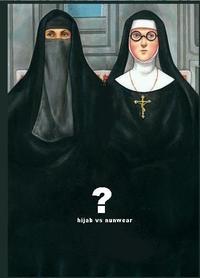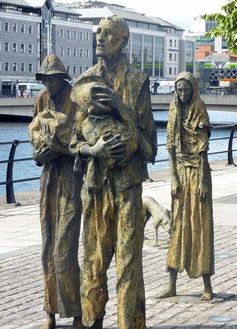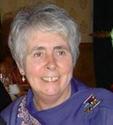
I’ve often wondered why a woman in a modern country like Britain would want to wear the niqab. I’d have to confess that it’s a bit disconcerting for me to have a conversation with someone whose face is covered apart from her eyes and I do find contact easier when I can see facial expressions. But religious dress is not confined to Islam or to women. Monks as well as nuns wear distinctive dress and I haven’t heard that they’ve been banned from wearing this in public. But wearing it has been banned in public schools in countries such as Germany and France ‘to make sure it doesn’t unduly influence pupils’ though I’m not exactly sure how wearing a particular dress would do that. It’s all part of a secularity that wants to exile religion from the public sphere, not a secularity that I’d agree with. I prefer a secular society that makes space for everyone, that appreciates diversity; that allows freedom of expression and doesn’t impose its own expression of citizenship. Secular societies are in danger of doing what religious societies did in the past and some do today – imposing a uniformity which can make people feel excluded with their various identities, whether these be religious or not, unacknowledged and disrespected.
I can imagine that it’s this perceived lack of respect for Islam at the moment that leads some women to choose to wear, not just the hijab, but the full covering of the niqab or burka. There certainly seems to be more women doing it now than even a few years ago. It has become a statement, I think, of being proud to be Muslim and to witness to this in a very public way. The more it’s criticised the more it becomes a symbol of religious freedom while in a country like Iran, where it’s imposed on women, not wearing it becomes a statement of religious freedom. Would it be so essential to completely cover up in a society that was much more open to Islam, understood it and didn’t identify it with terrorism?
Religious dress like all religious symbols and practices comes from a particular context but sometimes that context is forgotten in the significance given to the ritual or dress that takes on a sacredness and importance far beyond what it was in the beginning. This was the case with the religious habit that many sisters wore for years. It became synonymous with dedication and commitment and did have religious significance until history showed that what was thought of as a religious garb was in fact the dress typical of the time in which the community was founded. It then became unnecessary to wear what was an outmoded costume which cut us off from the rest of the population and made us different. We now have the freedom to wear what we want.
For Christians the veil belongs to this category. For centuries Christian women wore a head covering, particularly in Church. It was a sign of modesty, separated them from the pagans who didn’t wear a veil and imposed by a patriarchal society that stipulated how women were to dress and behave in public. Wearing a veil pre-dates Islam and would have been modest dress in the Prophet’s time. The Qur’an stipulates that men and women have to dress modestly and while the Prophet’s wives were required to shield themselves from public gaze it is debated within Islam whether this even means wearing the hijab today never mind the niqab or burka. For some Muslim women wearing the hijab is a genuine expression of their religion but for other women, equally committed it’s not necessary. This is not to call for any prohibition of wearing the veil but to respect it. However, I would hope that women whose participation and contribution to the future of the society in which we all live is important and valuable would not separate themselves by a more extreme form of dress which cuts them off from normal discourse. For me it would show an at-homeness as well as an interest and concern for the common good on which we all depend. But it is a decision that they must make and not one that is imposed upon them.



 RSS Feed
RSS Feed
